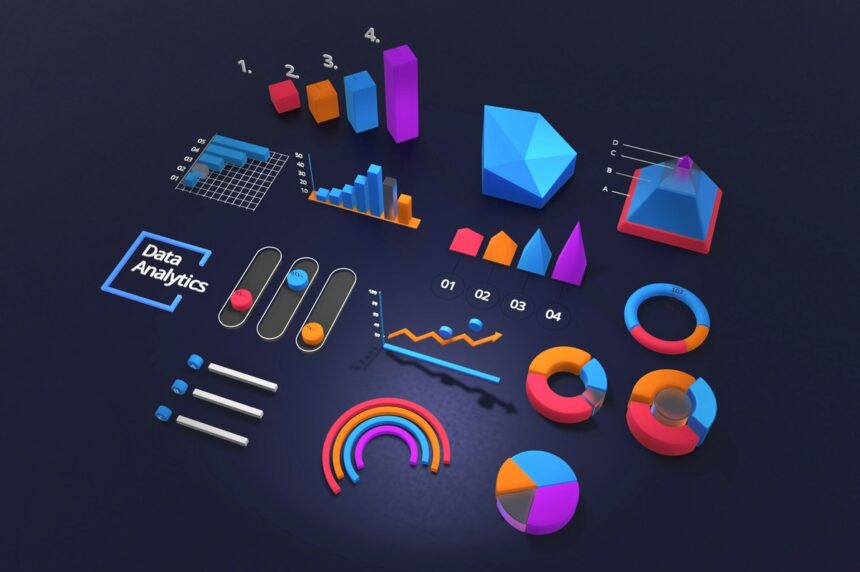Data integration is evolving unprecedentedly, and tools like SSIS 950 are at the forefront of this transformation. Understanding and utilizing SSIS 950 can significantly enhance the workflows of data analysts, IT professionals, and data engineers and drive better business outcomes. In this post will explore the key features and applications of SSIS 950, providing a comprehensive guide to mastering this advanced data integration technology.
Introduction to SSIS 950
SSIS 950 is a powerful data integration tool designed by Microsoft to meet the demands of modern data environments. It offers a robust platform for data extraction, transformation, and loading (ETL). Whether dealing with large volumes of data or complex transformations, SSIS 950 provides the efficiency and flexibility needed to streamline your data workflows.
Understanding the Need for Advanced Data Integration
The data integration landscape is continuously changing. With the explosion of big data and the increasing importance of real-time analytics, businesses need advanced tools to keep up. Traditional data integration methods often need to catch up regarding speed and scalability. This is where SSIS 950 steps in, offering a comprehensive solution that addresses these challenges head-on.
You May Also Like to Read : Nuoilo 12h: Ultimate Time Management Tool for Productivity
Key Features of SSIS 950
SSIS 950 has features that make it a standout choice for data integration. Let’s explore some of these features in detail:
Performance Enhancements
One of the standout benefits of SSIS 950 is its exceptional performance. It is engineered to process extensive datasets efficiently, minimizing processing time and boosting overall productivity. Enhanced parallel processing and optimized resource utilization are just a few ways SSIS 950 achieves this.
Connectivity
SSIS 950 offers extensive connectivity options, making integrating data from various sources easy. Whether you’re dealing with databases, cloud platforms, or flat files, SSIS 950 provides the connectors needed to seamlessly connect all your data.
Ease of Use
The user-friendly interface of SSIS 950 ensures that even those new to data integration can get started quickly. Drag-and-drop functionality, pre-built templates, and comprehensive documentation make it accessible to users of all skill levels.
Advantages for Data Analysts, IT Professionals, and Data Engineers
SSIS 950 offers unique benefits tailored to different professional groups within the data ecosystem. Here’s how it stands out:
Data Analysts
For data analysts, SSIS 950 simplifies preparing data for analysis. The powerful ETL capabilities allow for efficient data cleansing and transformation, enabling analysts to focus more on extracting insights than wrestling with data preparation.
IT Professionals
It benefit from SSIS 950 seamless integration capabilities. SSIS 950 supports various data sources and platforms, making it easier to manage data pipelines. Additionally, the performance enhancements ensure that data processing tasks do not become bottlenecks in the system.
Data Engineers
Data engineers will appreciate SSIS 950 scalability and robustness. It is built to handle large-scale data integration projects, ensuring that data flows smoothly from source to destination. This reliability is crucial for maintaining the integrity and accuracy of data in enterprise environments.
How to Get Started with SSIS 950
Implementing SSIS 950 in your data infrastructure is straightforward. Here’s a step-by-step guide to help you get started:
Step 1: Install SSIS 950
Begin by installing SSIS 950 on your server. To ensure a smooth setup, follow the installation guide provided by Microsoft.
Step 2: Configure Data Sources
Next, configure your data sources within SSIS 950. Utilize the built-in connectors to establish connections to your databases, cloud storage, and other data sources.
Step 3: Design ETL Processes
Use the SSIS 950 interface to design your ETL processes. Drag and drop components to create data flow diagrams that outline how data will be extracted, transformed, and loaded.
Step 4: Optimize and Test
Once your ETL processes are in place, optimize them for performance. Conduct thorough testing to ensure data flows correctly and efficiently through the system.
Future Trends in Data Integration
The future of data integration looks promising, with trends pointing towards increased automation and real-time processing. SSIS 950 is well-equipped to adapt to these advancements, offering features that support real-time data integration and automated workflows. Staying updated on these trends will help you leverage SSIS 950 to its fullest potential.
Conclusion
SSIS 950 is more than just a data integration tool; it is a catalyst for transforming how businesses handle data. Data analysts, IT professionals, and engineers can drive efficiency, improve data quality, and unlock new insights by harnessing its advanced features and capabilities. Start your journey with SSIS 950 today and experience the next level of data integration technology.
To get started with SSIS 950, visit Microsoft’s official page and explore the resources available to help you master this powerful tool.
Frequently Asked Questions (FAQs)
1. What is SSIS 950?
SSIS 950 is a robust platform for data extraction, transformation, and loading (ETL), designed to handle large datasets efficiently and streamline data workflows.
2. How does SSIS 950 enhance performance?
SSIS 950 enhances performance through features like enhanced parallel processing and optimized resource utilization, significantly reducing processing time.
3. What connectivity options does SSIS 950 offer?
SSIS 950 provides extensive connectivity options, allowing seamless integration with various databases, cloud platforms, and flat files.
4. Is SSIS 950 user-friendly for beginners?
Yes, SSIS 950 includes a user-friendly interface, drag-and-drop functionality, pre-built templates, and comprehensive documentation, making it accessible for users of all skill levels.
5. How can data analysts benefit from SSIS 950?
Data analysts can benefit from SSIS 950’s powerful ETL capabilities, which facilitate efficient data cleansing and transformation, allowing them to focus more on data analysis and insights.







